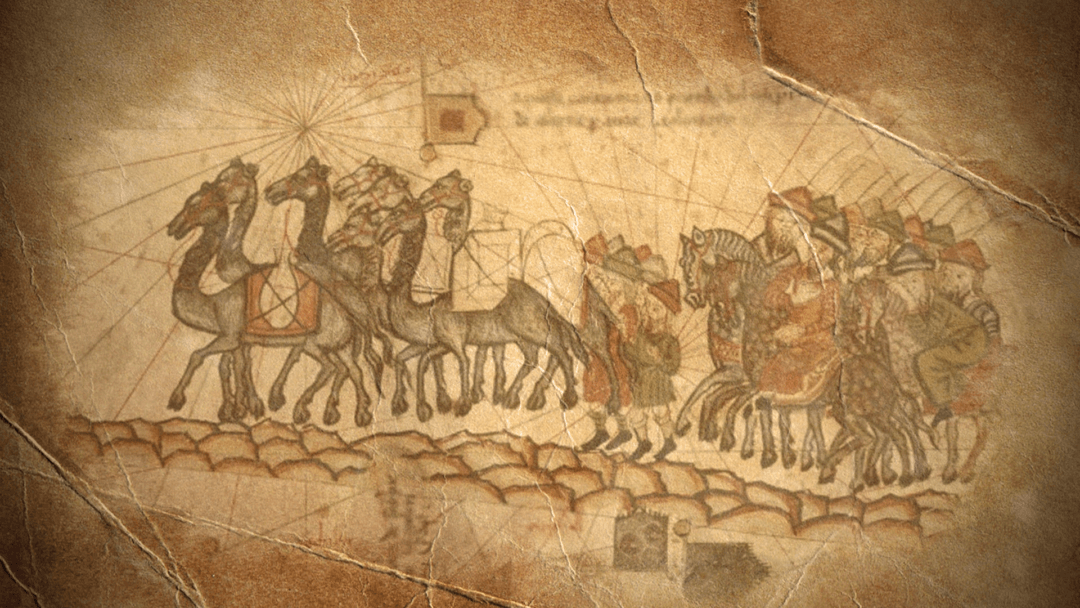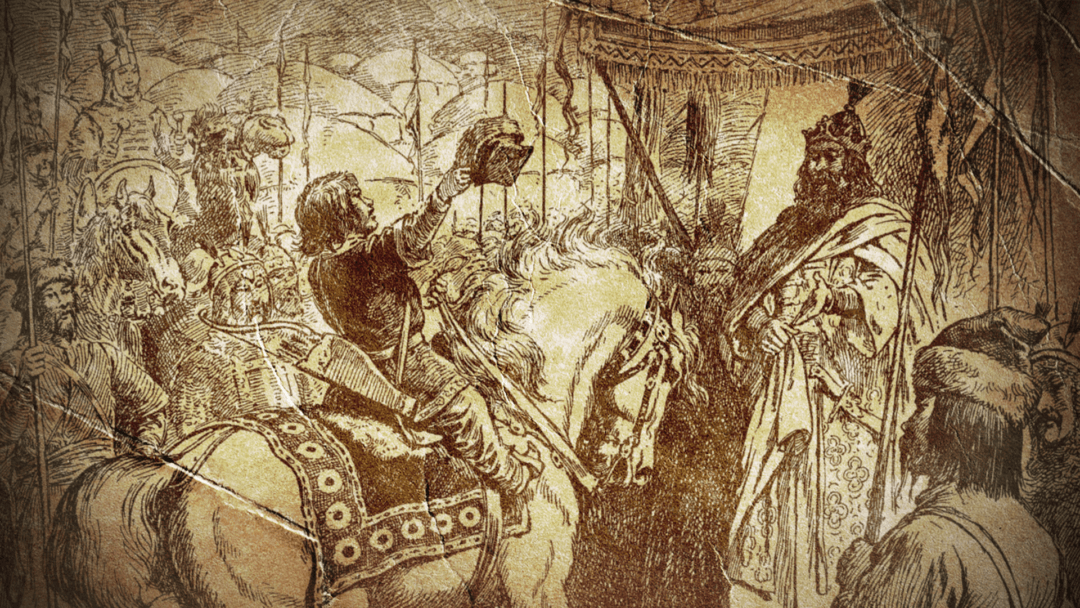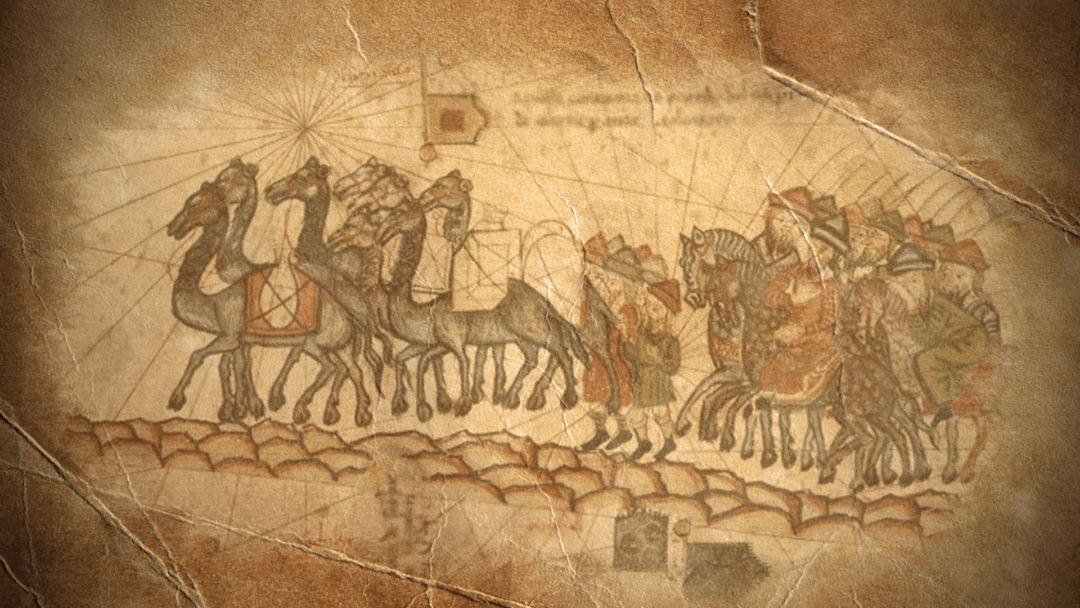
Greetings, fellow Age of Empires Community!
I’ve heard you enjoyed trying the recipes I brought to you last time we talked. Over the last few days, I traveled across the various routes that make up the Silk Road and gathered some new information you may not be familiar with. From hiking across treacherous terrains to analyzing the stars that kept travelers company during long nights, the Silk Road has some truly fascinating tales.
The Silk Road: A Brief Overview
The Silk Route, more commonly known as the Silk Road, is a network of ancient trading routes spanning across Asia and Europe. These networks allowed China to connect with the west and opened the possibility of trading everything from food, gold, religion, and technological advances with civilizations as large and as far away as the Romans. Although these routes were initially turbulent and dangerous to travel, when Genghis Khan, leader of the Mongol Empire, took power over the routes in Asia, the roads flourished in trade. His army protected travelers from crime, bandits, and pirates, and encouraged the exchange of cultures. This safety net established a sense of security for pilgrims which allowed them to spend a portion of their time recording their experiences, interacting with other civilizations, learning folklore from other cultures, new religions, and more. There are very few remaining records which tell these tales, yet we still have enough information to piece together some snippets of history which took place across these routes.
Let us take a look at some of these pieces of history.
The Original Food Influencers
Last week we discussed some notable foods and recipes for ancient civilizations and discovered many of their dishes were influenced by the trade of goods occurring near their area. Some of the groups of people responsible for these trades were nomadic groups who shared their food discoveries found across their journeys.
Nomads were some of the most common groups of people found along the routes. Whether they came from nomadic civilizations or had taken on the challenge of traveling across Eurasia own their own, they were consistently exposed to the plethora of both nomadic and sedentary cultures found on the Silk Road. As it has been established, these groups immersed themselves in the cultures of others, and food was one of the most important exposures and trade experiences across the roads. Food was a necessity regardless of where they would travel to. Since food was also mobile and easily carried to their next location, the new fruits, vegetables, dishes, and spices could be shared with their new neighbors. A fruit that had only been in one place, had now travelled and been tried by someone hundreds or even thousands of miles away. One item went from being a local favorite, to a global favorite thanks to a group who lived to travel.

Hiking Required More Than Just Two Feet
Traveling hundreds or thousands of miles to reach a new destination was no easy feat. Travelers from China were well prepared for the conditions they may have encountered along the way and made sure to have their religious deities and protectors with them for safe travels. One of the most famous monks to travel the Silk Road, monk Xuanzang (602–664), carried many of these items during his lengthy travels. Below is a brief list of some of the basic hiking equipment it is said he may have kept with him.
- A Backpack with Buddhist Sutras. The backpacks carried by Chinese travelers served a slightly different purpose than what a modern-day hiker’s backpack would. These bags had enough space for its owners to carry several large Buddhist sutras, scripts, and other important books that travelers found essential to have a successful journey.
- Dragons. It was unlikely that travelers had dragons following their journey, but the symbol of a dragon was used as protection and hope for a safe return from their visits.
- Water bottles. Made from hollowed out and dried calabash, these jugs were tied to the side of their owner’s belt for easy access.
- A Fly whisk. This whisk was made from a small wooden stick with a bushy end made from horse tail hair. Travelers could swing it back and forth to swat away any flies or insects they encountered across their paths. In addition, it was used as a sign of their religious beliefs. There are tales which mention Buddha and his followers carried fly whisks, which inclined many to carry them as a symbol of their faith.
- Wide brim hats. These were woven and secured via a strap across the chin.
- Ancient Mosquito Repellent. Carrying swirl shaped incense was common for those who took on the journey of crossing Eurasia. The smoke of the incense served as a repellent for any bugs and mosquitos who were annoying and could carry disease.

The Dangers of Travel
Traveling the Silk Road had its very prominent dangers. Crossing sweltering hot desserts, surviving the elements, lack of water, food and shelter were all a part of the journey. What is sometimes not acknowledged is travelers had to endure the dangers of traveling across unknown territories. Bandits were common across the routes as travelers were often carrying valuables such as gold, silver, spices, expensive fabrics, food, and water that these bandits may have needed to survive. In addition, any person crossing these lands exposed themselves to the risks of catching deadly illnesses such as the Black Plague.
Regardless of what route you decided to take, the dangers never ceased to exist.

The Rise of Astronomy Across the Routes
Science and technology were some of the most important trades happening across the Silk Routes. Discoveries, ideas, theories, and experiments regarding astronomy, cartography, and geography were tested and exchanged among scholars to expand their knowledge on how the world around them functioned and how they could contribute to the ongoing discourse. Astronomy was a major subject of interest for travelers and scholars, especially in Central Asia and the Muslim world as they gained influences on astronomy from India and Greece (some of the most well versed in the astronomy field). The knowledge collected from past astronomers was translated to different languages and later exchanged in major cities such as Baghdad, which was recognized as the center for scientific research and scholarly exchange. Because these cities served as a place for academics to explore, converse, and cultivate a culture of scientific knowledge, stopping here while traveling the Silk Road was common, and even encouraged. The lengthy and sleepless nights of travel, the rest stops in different regions throughout different times of year allowed for travelers to caarefully observe how the night sky changed around them through time. Annotating their observations and sharing them with others who had traveled this area once before broadened the knowledge of all those who took up interest in the stars. Furthermore, Europeans traveling to these regions were given the opportunity to expand their knowledge about astronomy and how to best approach its studies in Europe from these short yet meaningful exchanges. Without the Silk Road, the study of astronomy would not have grown the way that it did centuries ago.
Well, Age fans, I do hope you found this short, yet enriching burst of information about the Silk Road as exciting as I did. Now if you will excuse me, I think I am going to get myself one of those wonderful sun hats as I am going to need some extra protection for my next journey. Can you guess where I am headed?
Sage